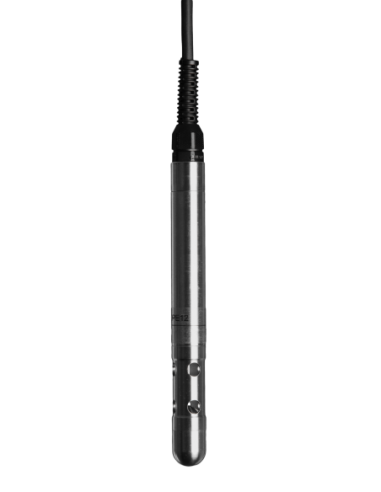DPE12
Water detector
Application:
Water level detection for monitoring tanks, rivers, overflows…
Usable in clear or turbulent water.
Principle:
Water detection is achieved by measuring electrical conductivity between a central electrode and the sensor body. The output signal is normally held low.
When conductivity is sufficiently high (presence of water), the output signal voltage is brought to a high level.
Mechanical characteristics:
| Body and electrode: | 316L stainless steel |
| Cable: | 2 conductors 0.22mm² + capillary under shielding, PVC or reinforced PUR sheath with Kevlar depending on length. |
| Operating temperature: | from 0°C to +100°Celsius |
Electrical characteristics:
| Power supply: |
9 to 24 Vdc |
| Signal output (max current): | 20 mA @ 24Vdc, 40 mA @ 12Vdc |
| Signal output (voltage): |
High level: SUPPLY+ via 10kOhm pull-up resistor Low level: 0.5V typ. + 10 Ohm x current |
| Consumption: | no load without water 1.2mA@12V 2.4mA@24V |
| Transistor: | N-channel MOSFET (ON Resistance: 5 Ohm typ.) |
| Current protection: | Internal 40 mA resettable fuse |




